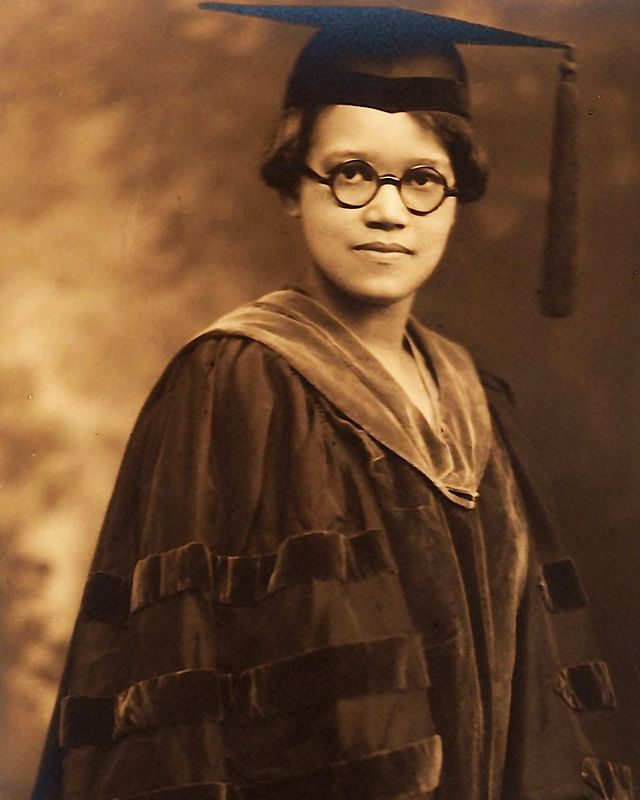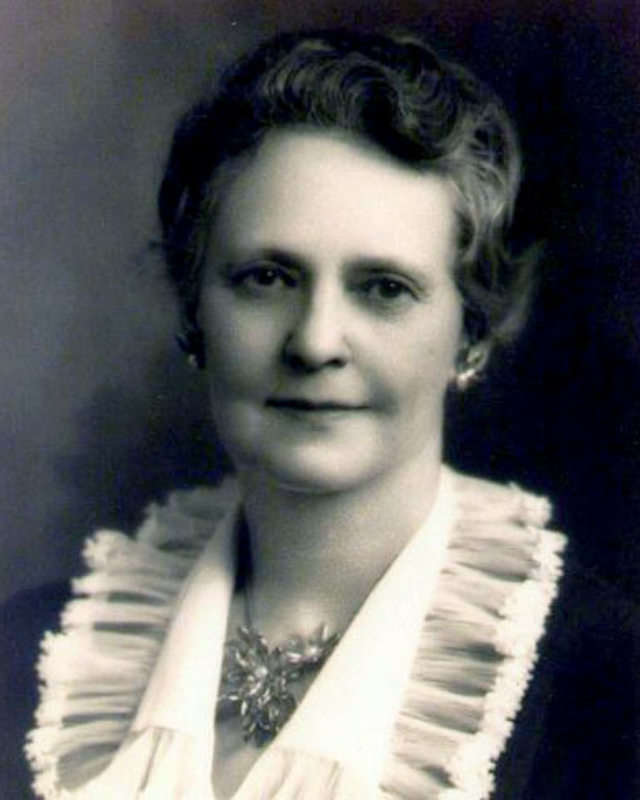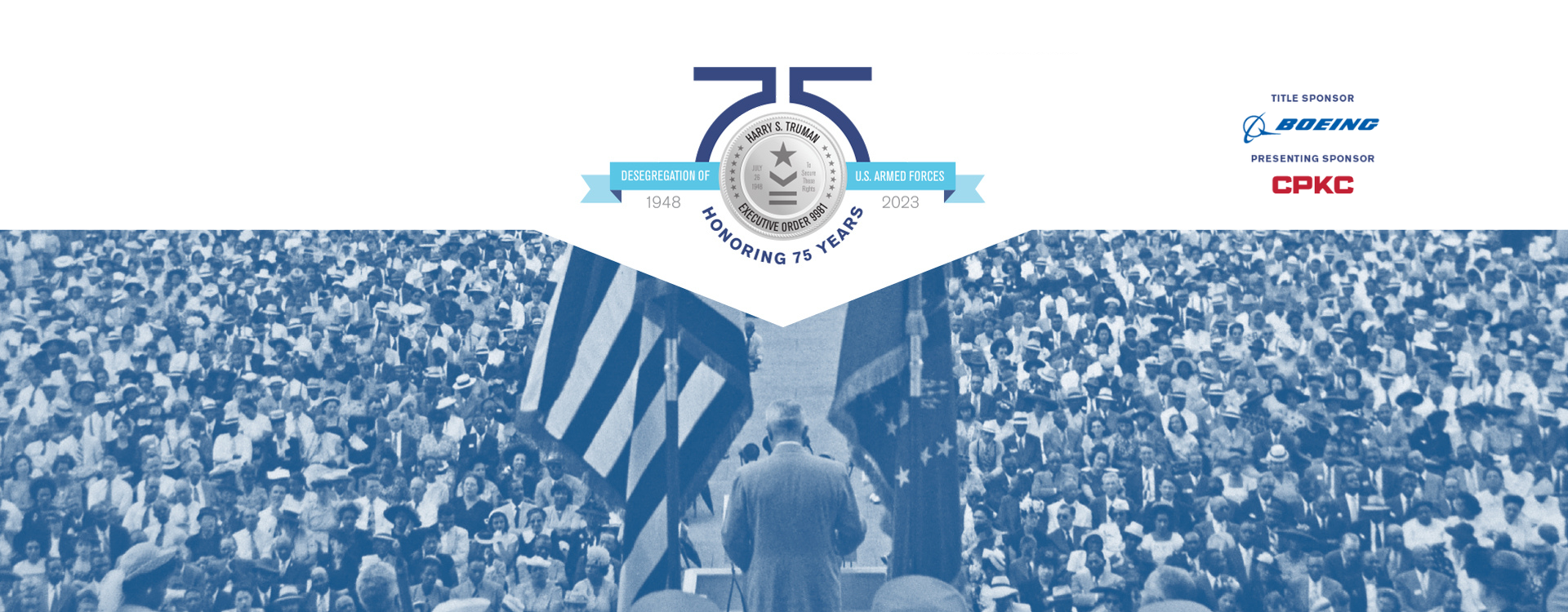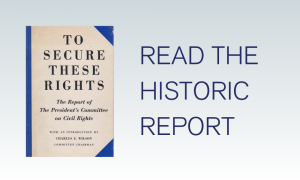TO SECURE THESE RIGHTS
By Steven F. Lawson, Professor Emeritus, Rutgers University
PART VII: COMMITTEE MEMBERS
Truman’s appointments to the committee reinforced his desire to minimize controversy and maximize credibility. One of the president’s aides, Phileo Nash, recalled the administration’s thinking in cobbling together what was described as a “Noah’s ark,” a committee of pairs: “We were so meticulous to get balance that we wound up with two of everything; two women, two southerners, two business [leaders], two labor [leaders]. . . , it was a carefully balanced commission.”36 The list also included two African Americans, and for its era, the agency had a decidedly liberal cast to it. Three of its members had participated in the National Emergency Committee Against Mob Violence, and the names of six of fifteen appointees had appeared on a list submitted by the NAACP’s Walter White to the president. True, the group did not include more militant African American activists, such as A. Philip Randolph, W. E. B. Du Bois, Mary Church Terrell, and Charles Hamilton Houston, but neither did it contain a single southern proponent of white supremacy. The two white representatives from Dixie, Dorothy Tilly and Frank Porter Graham, were considered liberal on racial matters.37
Given the subject matter before the committee, the black and southern delegates had to be carefully chosen for they had the clearest personal stakes in the outcome. The two black appointees reflected the careful White House selection process. Truman had a clear preference for the leadership displayed by the NAACP and the Urban League, yet the appointees could not be too closely identified with these organizations lest they be perceived as too partisan. Seeking so-called responsible Negroes, the administration tapped two African Americans with ties not only to civil rights groups but also to the corporate and academic worlds.

Sadie Tanner Mossell Alexander
Sadie T. M. Alexander was born in Philadelphia and had graduated with a Ph.D. in economics and a law degree from the University of Pennsylvania. After working briefly as an actuary for the black-owned North Carolina Mutual Life Insurance Company, she met her husband, Raymond Pace Alexander, a Harvard Law School graduate, and returned to Philadelphia to practice law with him. Sadie Alexander served on Philadelphia’s Commission on Human Relations and from 1943 to 1947 she was secretary of the National Bar Association, the professional association of African American lawyers who until the 1940s had been denied admission into the segregated American Bar Association. On the board of the National Urban League and the National Advisory Council of the American Civil Liberties Union (ACLU), the forty-nine-year-old Alexander had worked closely with the National Council of Negro Women, founded by Mary McLeod Bethune.38
The second African American on the PCCR, Channing H. Tobias, came from a different background. Born in Augusta, Georgia, Tobias attended Paine College, a black institution in his home state. An ordained minister in the Colored Methodist Episcopal Church, he first traveled outside the South to receive divinity degrees at Drew Seminary in New Jersey and the University of Pennsylvania. After returning to Paine to teach, in 1923 he began working as senior secretary of the Colored Work Department of the YMCA. Although a critic of discrimination, he accepted this segregated position because he believed that blacks had to control their own social and cultural institutions until genuine equality was achieved. At the same time, he used his position within the black community to join in antiracist projects affiliated with the Commission on Interracial Cooperation and the SCHW. In 1943 he became a board member of the NAACP and three years later joined the National Emergency Committee Against Mob Violence delegation that helped persuade Truman to establish the PCCR. By the time the president appointed him to the committee, the sixty-five-year-old Tobias had become the first black director of the philanthropic Phelps-Stokes Fund, which aimed to improve educational opportunities for African Americans. Less outspoken than Alexander, he nonetheless blended “high ideals with pragmatism” and “unyielding determination with ‘calm reasonableness.”‘ 39
Truman balanced these appointments of African Americans not with southern whites opposed to racial change but with white liberals who advocated racial justice without attacking segregation directly. Frank Porter Graham graduated from the University of North Carolina (UNC) in 1905 and went on to become president of the university. “Dr. Frank,” as he was affectionately known by students and faculty alike, staunchly defended academic freedom. Sought after by the federal government during the 1930s and 1940s, he headed the advisory council that established the Social Security Act and as a member of the War Labor Board advocated equal pay for black workers. The sixty-year-old educator walked a fine line as a racial progressive in the South. As the first president of the Southern Conference for Human Welfare, he delivered the keynote address at its inaugural Birmingham meeting and served on the board of the National Urban League. When Pauli Murray attempted to become the first black student to attend UNC in 1939, however, Graham politely turned her down. Rather than attacking Jim Crow directly, he stressed the importance of expanding the right to vote to disfranchised black southerners who could then use their ballots to bring political and economic democracy to the region.40

Dorothy Rogers Tilly
The second white southerner on the committee, Dorothy Tilly, shared Graham’s approach to racial issues. Born in 1883 in Hampton, Georgia, the daughter of a Methodist minister, Tilly graduated from junior college and actively pursued church work. During the 1930s, she directed a summer school program at Paine College to train African American women to become community leaders.in addition to her involvement with the Methodist church’s outreach programs to aid African Americans, she belonged to the Commission on Interracial Cooperation and the Association of Southern Women for the Prevention of Lynching. Without challenging segregation, the latter group waged a vigorous campaign against mob violence in the South. In 1944, Tilly became director of the women’s division of the Southern Regional Council.41
To chair the committee, Truman picked not an African American or a white southerner but a white northerner, Charles E. Wilson, one of two corporate executives on the committee. Born in 1886 into a poor family in New York City, Wilson rose from rags to riches. Dropping out of school and working at an electric company for three dollars a week, he climbed the ladder of success and became president of General Electric, where he earned $175,000 a year. A fiscal conservative who had opposed union organizing at General Electric, Wilson had experience working for the federal government during the 1930s in the National Recovery Administration and during World War II on the War Production Board. Although Wilson favored desegregation of the armed forces and served on the Commission on Universal Military Training, the president selected him less for his views on civil rights than because, as a leading corporate executive, the sixty-year-old Wilson gave the PCCR a stamp of legitimacy that would help create a consensus around its findings.42
The other corporate executive on the committee, Charles Luckman, had a similar career trajectory to Wilson’s. Born in Kansas City and originally trained as an architect, Luckman switched to sales and moved up in the ranks of Lever Brothers to become its president in 1946 at the age of thirty-five. Unlike Wilson, this “boy wonder” of American business supported labor unions, collective bargaining, and social legislation. Combining business experience with a progressive outlook, Luckman believed that the committee could educate the public on civil rights much as his company marketed soap and toothpaste.43
Presumably to balance the two corporate titans, Truman chose a pair of labor union leaders. Like his executive counterparts, James Carey had pursued his dream of economic success but chose instead to apply his talents to organizing workers. Employed at a radio laboratory after graduating from high school in Philadelphia, during the Great Depression Carey attended night school at Drexel Institute to study electrical engineering and then attended the University of Pennsylvania’s Wharton School of Finance. He stayed in radio, but not in the management end; rather, in 1935, Carey became president of the United Electrical, Radio, and Machine Workers of America. He subsequently became active in the CIO and was elected secretary-treasurer of the national union. A staunch anti-Communist, he had lost control of the United Electrical union to left-wing opponents. Carey had previously tangled with General Electric’s Wilson over collective bargaining issues, although he praised his former adversary and most likely agreed with him that the electrical workers’ union had fallen into the wrong hands. More important for his work on the committee, the thirty-five-year-old Carey had chaired the CIO’s Committee to Abolish Racial Discrimination and had attended the critical meeting against mob violence with Truman at the White House in September 1946.44
Boris Shiskin represented another labor success story. A Russian Jewish immigrant from Odessa, Shiskin settled in New York City in 1922 and matriculated at Columbia University. Upon graduation, he went to Washington, D.C., on a fellowship and wound up working for the AFL as an economist and housing expert. Although the CIO had broken away from the AFL in 1937 over philosophical differences, the forty-year-old Shiskin agreed with Carey about racial equality. Shiskin served as a consultant for a number of government bureaus during the era of the New Deal and World War II, and his most relevant qualification for the PCCR had been membership on the Fair Employment Practice Committee from 1942 to 1946.45
The remaining members of the committee were equally distinguished citizens from a variety of backgrounds that complemented each other and the rest of the group. John Dickey joined Graham as the second university president on the panel. A graduate of Dartmouth College and Harvard Law School, the thirty-nine-year-old Dickey became president of Dartmouth in 1945. He had not been involved in racial affairs, but he had served as director of the Office of Public Affairs in the State Department.46 Also without any connection to civil rights, Francis P. Matthews was an Omaha, Nebraska, lawyer and a Catholic layman prominent in civic and educational affairs. As chair of the Board of Regents of his alma mater, Creighton University, he had a common interest in education with Dickey and Graham. As an officer in the U.S. Chamber of Commerce, he fit in well with Wilson and Luckman. Matthews authored a tough report on Communist infiltration in America for the Chamber of Commerce, and this put him squarely in line with the president’s cold war ideology.47
Despite its biblical namesake, the so-called Noah’s ark committee had room for three members of the clergy. Recognizing the need for ecumenical balance, Truman appointed a Jew, a Catholic, and a Protestant. Rabbi Roland Gittelsohn had been a decorated chaplain with the Marines at the Battle of Iwo Jima. A native of Cleveland, he presided over a synagogue on Long Island, New York. His dedication to racial and religious cooperation reflected the orientation of the committee.>48 The Episcopal bishop, Henry Knox Sherrill, had volunteered as a chaplain overseas during World War I, and during the Second World War he chaired the Commission on Chaplains in the Army and Navy. Born in Brooklyn, he spent many years as head of the Massachusetts diocese before moving to the top of the Episcopal hierarchy. There was little in his background that focused on civil rights.49 Not so with Bishop Francis J. Haas, dean of Catholic University’s School of Social Service. He had close ties to the Roosevelt administration, and FDR had dispatched Haas, to no avail, to try and heal the cleavage between the AFL and CIO. In 1943, Roosevelt appointed Haas to chair the FEPC, on which Shiskin and Graham sat, and Haas conducted hearings on racial discrimination in the railroad and defense industries. His tenure quickly came to an end when the Catholic church appointed him bishop of Grand Rapids, Michigan.50
The remaining two members had solid liberal credentials. Franklin D. Roosevelt, Jr. was appointed vice-chair of the PCCR. The son of the president, a graduate of Harvard with a University of Virginia law degree, and a decorated naval officer during World War II, Roosevelt had joined the American Veterans’ Committee, a liberal alternative to the American Legion. He also became a founding member of Americans for Democratic Action, a group that embraced both social reform and anti-Communism. Roosevelt’s greatest asset for Truman was his name and lineage, which connected Truman to the legacy of his predecessor.51 A liberal anti-Communist like FDR Jr., Morris Ernst had more humble origins than his colleague. Born in Alabama but raised in New York City, Ernst graduated from Williams College, went into the family furniture business, and worked his way through New York University Law School at night. He became co-council for the ACLU and won a number of high-profile cases involving censorship and birth control. In later years, Ernst became preoccupied with the perceived Communist menace and reconciled his civil libertarianism with fervent support of the House Committee on Un-American Activities (HUAC). He bragged about his close relationship with FBI director J. Edgar Hoover, and defended him from criticism by fellow civil libertarians who did not share Ernst’s passion for purging Communists.52
The committee’s staff, which had the difficult task of researching and writing the report, were strong advocates of federal intervention to expand civil rights. The committee’s director, Robert K. Carr, taught in the government department at Dartmouth, where Dickey was president, and had authored a recent study on the Civil Rights Section (CRS) of the Justice Department. Created in 1939, the CRS operated as a stepchild in the department, short on funds and lacking sufficient legal authority to defend minorities from civil rights violations. Eleanor Bontecou, an attorney in the CRS, lamented the attitude of her Justice Department colleagues: “They looked upon us as . . . ‘do-gooders’ and what not.53 Carr’s study concluded that the CRS needed sufficient power not just to protect civil rights but also to increase the scope of the constitutional rights afforded to citizens threatened by racial discrimination. Carr had one black assistant, Frances Williams, an alumna of Mount Holyoke College and the University of Chicago. She was involved in the YWCA, a training ground for future black and white female civil rights activists, and had served as a race relations advisor in the Office of Price Administration. Nancy Wechsler, who held the post of committee counsel, was active in the Americans for Democratic Action. Milton D. Stewart, a former journalist who had studied economics and social philosophy at New York University, directed research.54
More than a Noah’s ark, the PCCR consisted of people with overlapping and multiple identities. For example, Dorothy Tilly was a southerner and a woman; Sadie Alexander was an African American, woman, and lawyer; Channing Tobias was a southerner, African American, and member of the clergy; Morris Ernst was a civil liberties lawyer, anti-Communist, and Jew; Bishop Haas was a Catholic, northerner, and college dean; Frank Graham was a southerner, Protestant. and college president. Whatever similarities or differences existed among them, committee members approached their task seriously and were determined to take President Truman at his word, not just to inventory the state of civil rights in America but also to come up with concrete recommendations to secure those rights. It was as good a committee as this chief executive could assemble, a concerned but cautious body, steady but progressive.
PREVIOUS: Part VI – Creation of the President’s Committee on Civil Rights
NEXT: Part VIII – The Committee at Work
Navigate through this essay by section: 1 2 3 4 5 6 7 8 9 10 11 12 13 14 Notes



